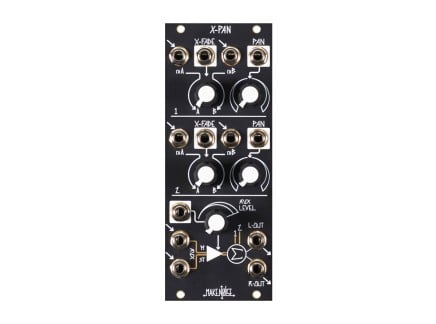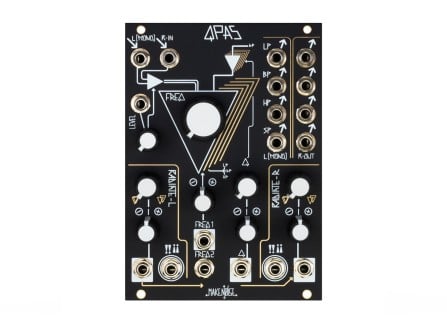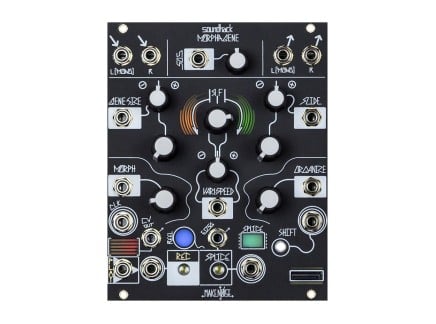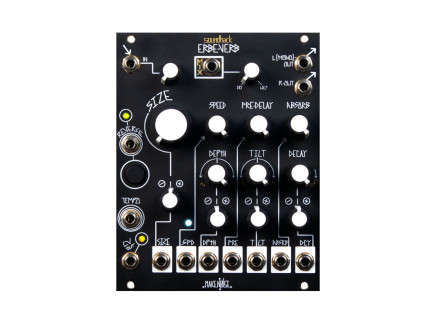Make Noise has a habit of taking seemingly simple concepts and making it clear how far they can be pushed, how creatively they can be manipulated. By simply considering how a new design could relate to their other modules, every new Make Noise release fosters inspiration.
Make Noise doesn't seem to be making just any module for the sake of fitting into the greater Eurorack stage; while their modules will obviously play well with any other Euro gear, it seems more as if they are thinking of how the Make Noise ecosystem itself is evolving, and how new designs could benefit and extend their already powerful and inspiring instruments.
In keeping with this trajectory, Make Noise today announced a new addition to their growing line of ever-popular modules, the X-PAN—which not only provides some obvious utility...it covers some fairly standard techniques previously difficult to achieve in the Make Noise ecosystem, and opens them up for creative use.
X-PAN is a crossfader, mixer, panner, VCA, and general tool for all things dynamic and spatially-oriented. It offers a solution for simple voltage-controlled crossfading and panning (previously a bit difficult in the Make Noise realm, outside of the quirky RxMx), as well as a means of combining stereo signals (also a bit difficult with Make Noise modules alone, especially given their increasing number of stereo-capable modules). In any case, dynamic panning and mixing are now easily accessible in the Make Noise universe.
A Panoramic View
X-PAN offers two channels of crossfading and panning, with each function equipped with voltage control inputs. This allows for dynamic fading between signals as well as dynamic stereo location. X-PAN uses high-quality, super-responsive, and super-clean VCAs for crossfading and panning, making it possible to achieve a number of interesting effects.
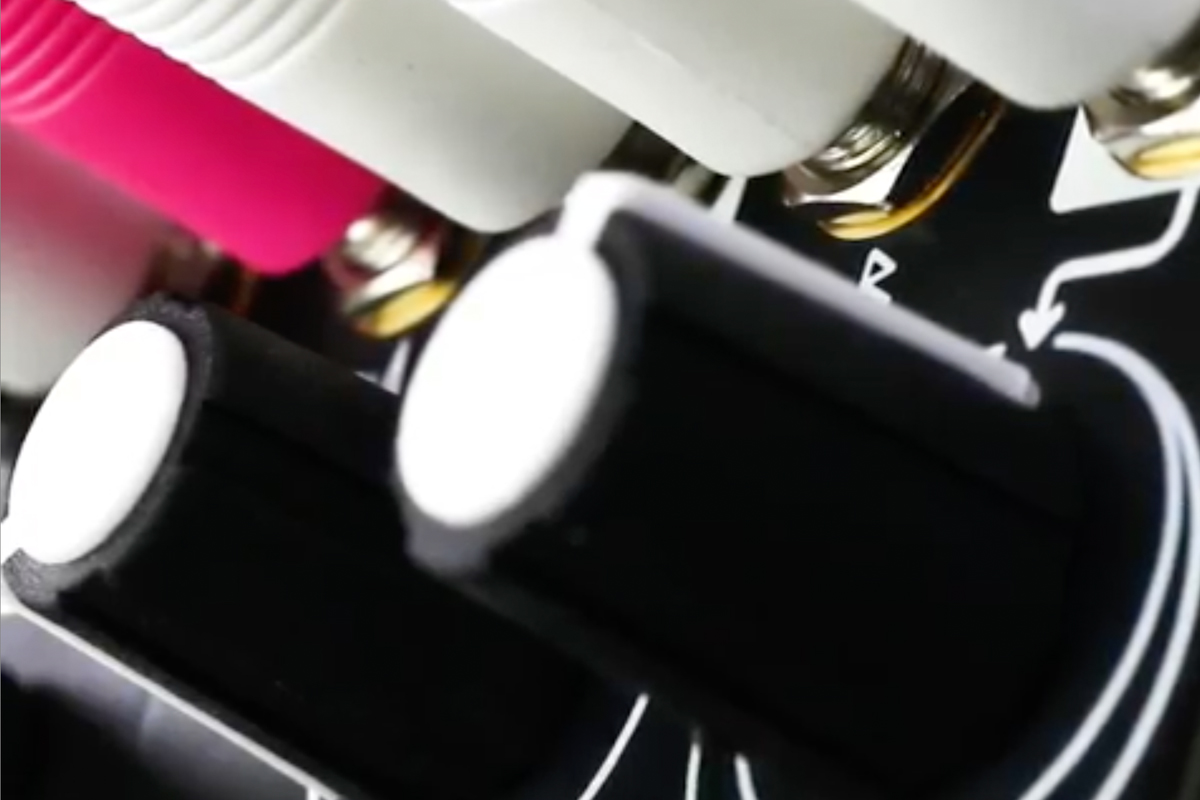 A screen capture from Make Noise's mysterious Instagram announcement of the X-PAN.
A screen capture from Make Noise's mysterious Instagram announcement of the X-PAN.
The discerning musician will notice that the two top channels do not offer direct level controls: luckily, X-PAN has plenty of headroom for combining signals, so distortion is generally not a concern. And if one desires a direct level control for incoming signals, consider using only one side of each crossfader: by crossfading between no input signal on one side and the desired signal on the other, the X-PAN permits standard level control and VCA-like behavior. This also makes it easy to create ducking-style effects as well—simply plug into the left input of a crossfader and use a unipolar envelope to modulate the crossfade amount. Triggerable ducking effects are suddenly easily accessible.
Of course, crossfading itself is a technique full of unique potential: it can be used to dynamically blend between two signals, offering the possibility of standard mixing or controllable balancing between signals. This is pretty awesome—for instance, one could patch two waveforms out of a single oscillator into each side of a crossfader, enabling dynamic timbral shifts not unlike filtering or waveshaping. One can even use control crossfading at audio rate—allowing complex waveshaping effects and creation of sidebands not unlike those from typical AM.
And of course, voltage-controllable panning has long been amiss from the Make Noise world—it was, of course, possible to do panning tricks with a ModDemix, Dynamix, or Optomix with a Maths (see some of the panning tricks outlined in our Learning Synthesis: VCAs article), but those techniques are a bit resource-heavy for small systems. As such, I am super excited to see Make Noise introduce a straightforward way of adding this critical electronic music technique to their repertoire. Like with the crossfader, the panning also responds well to audio-rate modulation...so stereo sidebands and spatial morphing effects await.
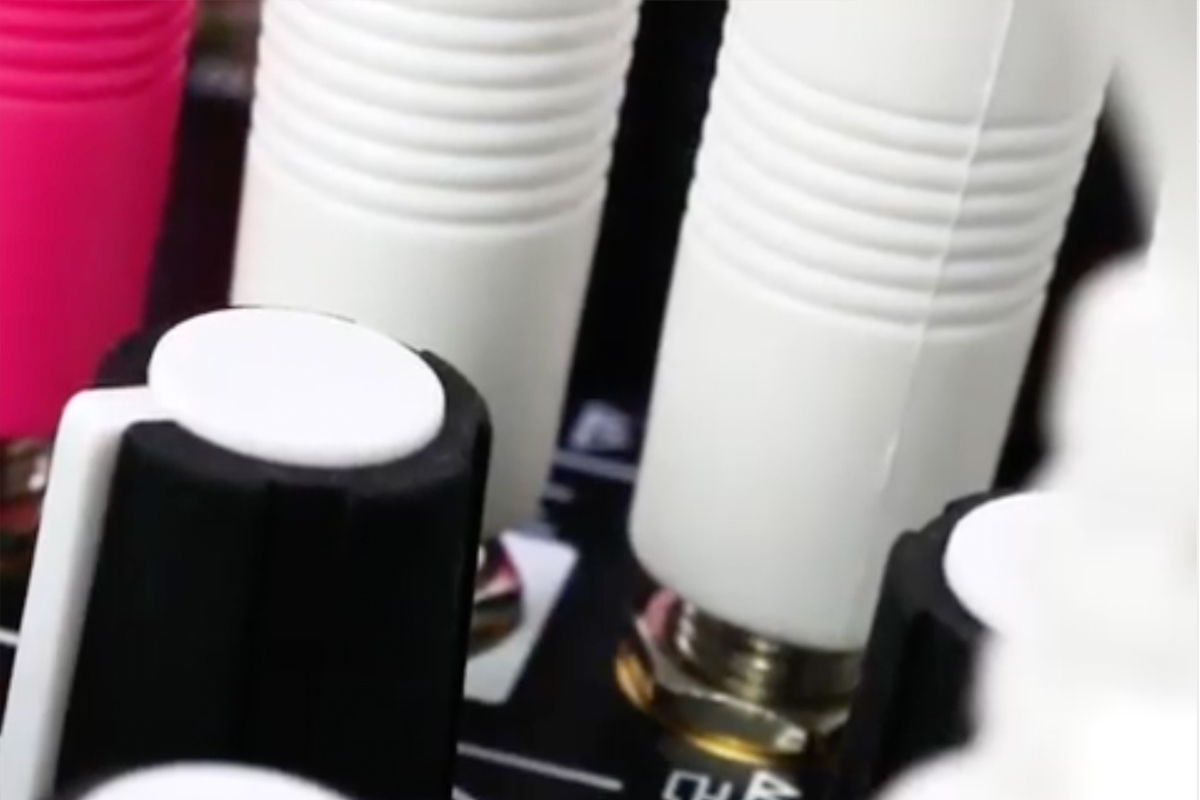 Yet another detail shot of X-PAN from Make Noise's Instagram.
Yet another detail shot of X-PAN from Make Noise's Instagram.
Something else cool to consider—since there are two pan-able channels with crossfader, one could use a single CV source to crossfade between two stereo sound sources. Try patching a QPAS's left and right outputs to the A inputs on each channel and a Morphagene to the B inputs while setting the first channel full left and the second full right. Suddenly, you have a means of mixing two stereo signals. And of course, the module features a stereo Aux channel as well, complete with voltage control for level. In this way, X-PAN can easily be used as a mixer for three stereo sources or a stereo source and up to four mono sources.
X-PAN is fully DC-coupled, allowing you to route and combine control voltages as well as audio. In fact, this could make for the backbone of an uncommonly powerful CV distribution scheme; especially if combined with a Maths and Wogglebug, the X-PAN clearly becomes a stellar means of mangling CV, turning even simple sets of control voltages into a knotted means of remotely controlling many sources simultaneously. Turn just a couple of humble voltages into a chaotic interrelated web of control, or simply use it to switch CV sources or destinations: all is easily possible.
Complete with a patently Make Noise-ian means of peculiar parameterization, the X-PAN can definitely do all the things that a stereo mixer should do, and much more. Whether occupied with audio-rate panning, crossfading between timbres, or complex CV routing, the X-PAN promises to bring a ton of potential to the Make Noise universe, and to Eurorack synths in general: with a solid combination of simple features parameterized in this way, a host of both practical and novel possibilities make themselves immediately apparent.


